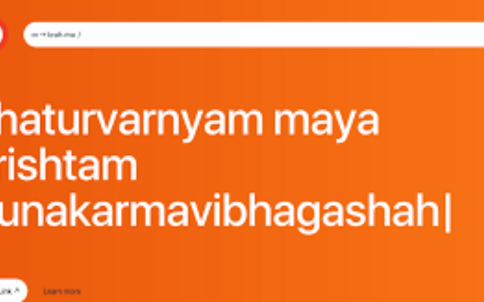Originally Hindu way of worship was performing Yagna by uttering certain mantras before fire and offering (ahuti) a few prescribed things to it. There was no idol worship. That was the way to please gods who give us everything needed to live comfortably. Worship was with words of praise about god but there was no concept of thanking him. Performing Yagna is preparing oneself for receiving knowledge of god. Different mantras are there for different ritualistic events in life. Mantra is a sequence of sounds uttered in a specific way for a desired effect. Modern science too accepts the power of sound and the vibration it causes.
Also read: Hinduism – 1
Hindu society appears to be divided to those who do not look deep. Krishna said in Gita that he created the four Varnas among human beings based on character and profession. (“Chatur varnam maya srushtam, Guna Karma vibhagaha”). The point to note is that nobody among the Bahmana, Kshatriya, Vaisya and Sudra varnas is superior or inferior as all are children of god. A person born in a family inherits certain genes and the environment in which he grows also shape his personality. His likes and dislikes also depend on these two factors which prompt him to choose his profession which is mostly the family’s profession as he inherits knowledge and expertise of it without effort. So by his character and profession he is said to be of a particular Varna.
Sage Manu wrote Manu Dharma Sastra, a code of conduct or laws for Hindus. He compared four varnas to four parts of human body. He said that Brahmans are created from the head of god, Kshatriyas from shoulders, Vaisyas from thighs and Sudras from feet. This comparison gave rise to feeling of superior or inferior among the varnas based on the position of each one in the body. Failing to see the comparison as symbolic is the cause of confusion and animosity. Brahmins are followers of Brahma. They acquire knowledge and guide society. So they are like head of the society as head is the symbol for knowledge. Kshatriyas who protect society are compared to shoulders which are the symbol of strength. Vaisyas, whose profession was cultivation and dairy farming, provide sustenance to the society. Just as pillars bear the weight of a building, thighs carry the body of the society. All other professionals called Sudras serve the needs of the society without whom society cannot function. So they are compared to feet, a symbol of movement of the society. The point to note is that everybody is dependent on others and no one can exist without the cooperation of others. So the question of being superior or inferior is only imaginary.
Also read: Hinduism – 2




